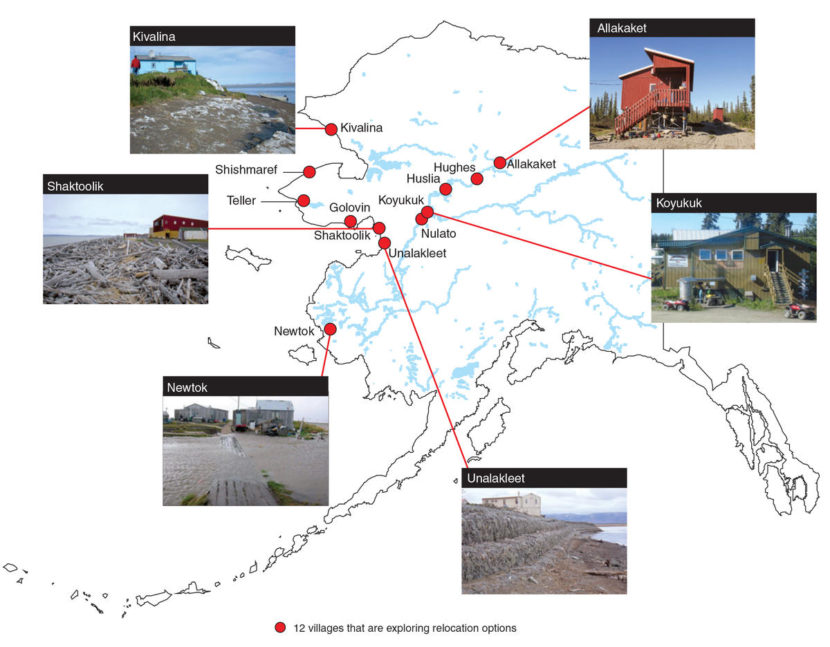
(Photo by Isaac Kestenbaum/Frontier of Change)
“Twenty years from now, this place would probably be under water,” says Rhoda Asicksik, who lives in the western Alaska coastal village of Shaktoolik. “That’s what really, really concerns me.”
Asicksik and most of Shaktoolik’s 350 residents want the federal and state governments to move the community away from the barrier spit on which it’s built – and which is in danger of being engulfed by the ocean or being swamped by waves driven by powerful storms.
“It’s so scary — too scary — to live here in Shaktoolik, because we have virtually no way of escape.” Asicksik said.
Her husband, Eugene Asicksik, Shaktoolik’s mayor, believes the best short-term solution is to improve infrastructure and build a mile-long berm the locals built on the seaward side of the village that he recently showed to a visitor.

(Public Domain photo by NOAA)
“We’re standing on the berm now,” Eugene Asicksik told a documentarian during a visit to Shaktoolik and other Alaska Native villages earlier this year. “The berm goes all the way past the dump. At least we try and defend ourselves and maybe give us more time to beat the storm back a little.”
Shaktoolik is one of four coastal Alaskan villages considered most at-risk from such climate-change impacts as receding sea ice, rising sea levels and powerful storms. Newtok, Kivalina and Shishmaref all are working to relocate to safer locations. Shaktoolik has opted to stay where it is – at least, for now.
“Basically what we’re trying to stop now is becoming an island,” Eugene Asicksik said in a telephone interview last week.
Asicksik says he and other locals built the berm in 2014 after years of working with bureaucracies more accustomed to dealing with the aftermath, rather than the lead-up, to disaster. Like the one that’s eating away at the sandy spit on which Shaktoolik was built in 1967, after an earlier relocation.
“We’ve already lost 50, 60 feet, since we relocated here,” he said.
That, combined with the worst-case storm surge scenario, worries Joel Niemayer, federal co-chair of the Denali Commission, which President Obama tapped to coordinate a response to the threat.
“That just terrifies me,” Niemayer said. “It just terrifies me.”
Editor’s note: many thanks to independent producer Isaac Kestenbaum for sharing excerpts of his interviews with Eugene and Rhoda Asicksik, conducted as part of the Frontier of Change project.
